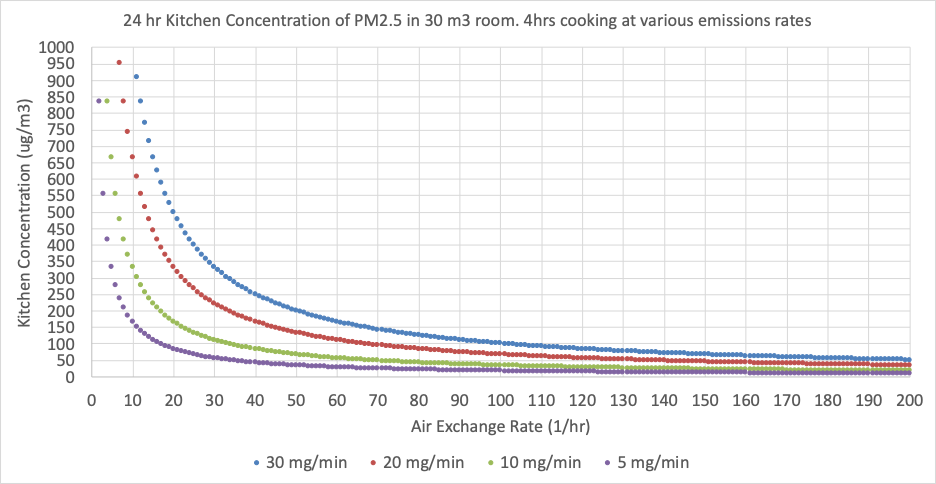Air Exchange Rates and the ISO Tiers of Performance

In the lab, we are used to thinking of the ISO Tiers as static, based on how much pollution enters a 30 cubic foot kitchen during four hours of cooking with 15 air exchanges per hour. However, in 2018 ISO published 19867-3 that further explains how, for example, increasing the air exchange rate (ACH) changes the Tier rating. Generally, doubling the air exchange rate cuts pollution (PM2.5 and CO) in half.
In a low ventilation situation (10 ACH), Tier 4 requires that the emissions of CO are lower than 2.2 grams per megajoule delivered to the pot (g/MJd). But in a higher ventilation condition (30 ACH) the stove can be three times dirtier, emitting up to 7 g/MJd, and still be in Tier 4. Cooking outside is often employed by the cooks we work with because smoke is bothersome and unhealthy.
ISO 19867-3 reports that studies of air exchange rates have found a lot of variation in ventilation, from 4 ACH in very tight buildings to 100 ACH outside in the fresh air. When I lived on a ranch in Mexico, most of the cooking took place outside under a veranda (which also made it easier to smell the wonderful homemade coffee brewing in the early mornings). When Sam Bentson carefully measured the ventilation rate under our veranda in Oregon he also found that when a gentle breeze was blowing (2 MPH) the air exchange rate per hour was around 100.
At 100 ACH, with so much dilution occurring outside, achieving Tier 4 for PM2.5 and CO is easier. In our experience, the most successful and cost effective interventions are situation dependent. We find that a combination of approaches to protecting health enables a welcome adaptability to the actual and interwoven circumstances.




Great work. Thanks for the data to support the pledge for portable stoves to give people the freedom to cook anywhere and take their stove outside when possible and climate allows, instead of confining the users to cook indoors in a kitchen on a fixed stove.